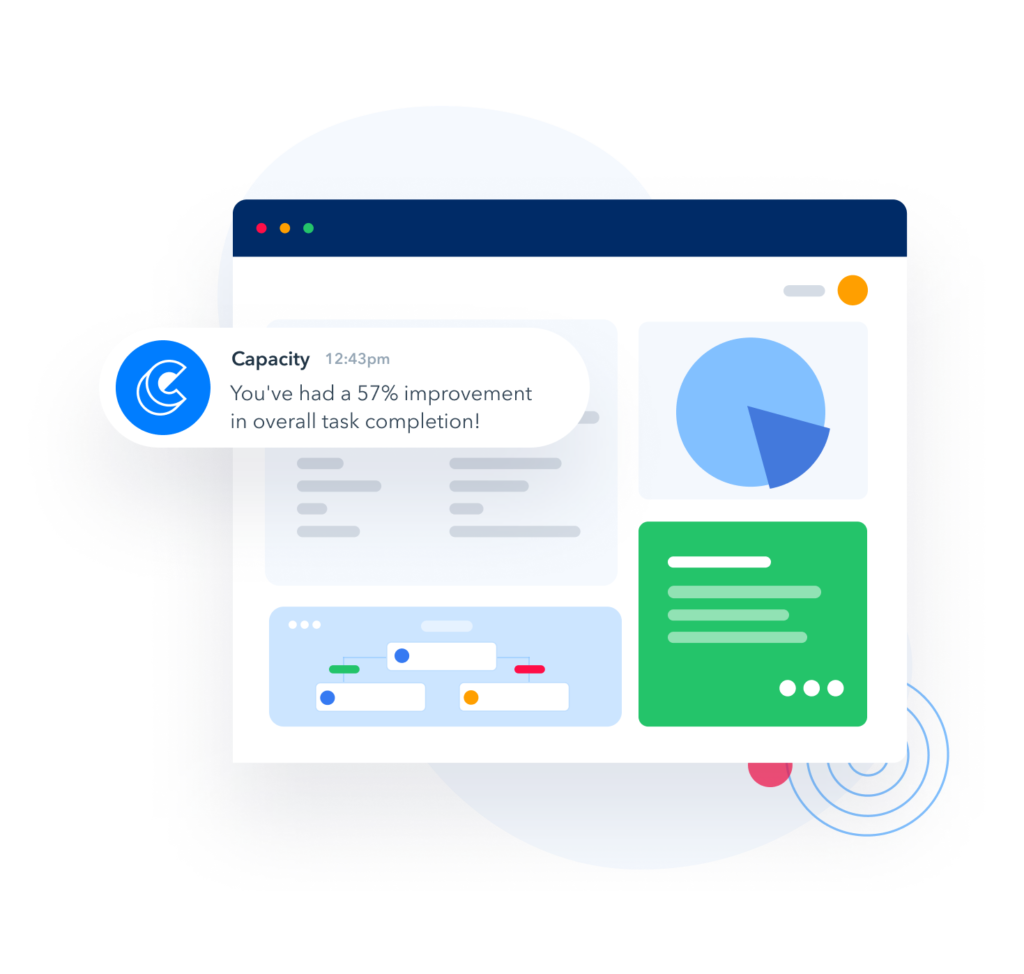Robotic process automation (RPA) is emerging as one of the most effective tools for businesses looking to maximize efficiency and to cut down on costs. With RPA, you can use artificial intelligence-enabled technology to automate repeatable, high-volume workflow tasks, thus freeing up your employees and allowing them to focus on more challenging work.
McKinsey & Company has concluded that RPA will have a total economic impact of $6.7 trillion by 2025. In fact, McKinsey believes that such automation software will have a bigger impact than many other “hot” industries, including 3-D printing and autonomous vehicles, and may only trail mobile Internet for phones and tablets.
Foundational technologies have been around for decades.
RPA has become one of the most talked about topics in automation over the last several years. While RPA is relatively new, the foundational technologies it’s built upon have been around for years.
Optical character recognition (OCR) has been in development for over a century, although it’s evolved rapidly in the last few decades. Screen scraping software emerged in the 1990s, while workflow automation software has been in use even longer. Artificial intelligence has been a topic of discussion for decades, although many major breakthroughs have occurred over the past several years.

Many RPA programs rely on the above technologies. Meanwhile, the term “robotic process automation” was first coined in 2000. By leveraging screen scraping software, workflow automation software, and AI, it soon became possible to replicate human interactions with digital systems.
So, what does RPA actually do?
RPA’s technological capabilities are increasing every day while developers continue to replicate complex human interactions and activities. Already, basic RPA programs can accomplish a host of “simple” tasks, such as pulling out structured and semi-structured data, filling out forms, and logging into applications. RPA programs can also move and copy files, scrape data, and more.
RPA will likely become more prominent and powerful in the coming years. First, the technologies that underpin RPA are continuing to evolve at a rapid clip. Screen scraping software, AI, and workflow software have all advanced by leaps and bounds in recent years. This will accelerate the development of RPA.
AI will have a big impact on RPA.
AI, in particular, could have a major impact on determining how RPA is deployed and what it is capable of. Many of the tasks automated by RPA may seem simple, but for software programs, the tasks can be immensely complex. As AI becomes more robust and is better able to learn and interact in dynamic environments, it will be able to handle increasingly complex tasks.
Automation software has typically been limited to rule-based processes where no deviation is expected. This has greatly limited what can be automated. However, once equipped with AI, RPA software may be able to handle exceptions. This should allow for many more tedious processes to be automated.
Machine learning could also prove vital for RPA. A type of artificial intelligence, machine learning allows software bot programs to learn on their own. This could prove to be especially important for RPA. If software can learn from changing conditions, mistakes, and more, it’ll be able to adapt and enhance its efficacy.
RPA research and development is on the rise.
Meanwhile, more companies, entrepreneurs, and investors are focusing specifically on RPA software, recognizing its potential. This should yield even more creative software solutions. RPA is also expected to have a dramatic impact across most industries, including human resources, medicine, and more.

Currently, many RPA programs focus on automating just a small part of a given process. However, as technology and software advances, RPA solutions will be able to automate an increasingly large part of the process.
Increased productivity and lower costs.
For companies, more advanced RPA solutions should make business processes much more efficient. RPA also eliminates human error and is especially appealing as it can eliminate tedious bottlenecks, such as processing forms.
As employees are freed up from such tasks, they can shift focus to more complex challenges, such as working one-to-one with customers. This should increase productivity and could boost employee morale, which could then lower turnover. Understanding that evolution is a core component of leveraging its benefits and unearthing future possibilities.
You know the baseline of robotic process automation, and the benefits of RPA are clear:
- Increased productivity
- Increased employee satisfaction and retention
- Simplified customer service
- Lower business costs
- Opportunities for reskilling the workforce
But where did it come from? How has it evolved to be the powerful driver of modernization and digital transformation that it is today? Three drivers have contributed to the evolution of RPA into the concept we know it as today.
Evolution driver #1: Automation.
In its original form, automation has been around since the Industrial Revolution. It describes, quite simply, processes that happen without manual inputs being required.
In the 1990s, automation made its way into computer processing. The rise of graphic user interfaces, especially, required automation at all levels. When someone clicks on a button, it kicks off automated processes in the background that don’t just lead to the next step but also register and track the button click.
A more complex form of automation is the use of macros, which are rules that describe a series of if-then processes. It gets its name from the process of turning a simple action into a larger automated series of steps to get to the end goal.
Automation is the A in RPA. As the ability to automate digital tasks has evolved from simple button clicks to more complex macros, RPA has also evolved into more complex tasks.
Evolution driver #2: Workflow management.
At their most basic, workflows streamline everyday processes and activities. They’re essential in any business looking to build complex processes, from production and internal task management to following up with leads and customers.
Take this real estate example. When a new borrower submits the paperwork for a loan, a workflow kicks off that includes anything from information verification to chasing missing information and, eventually, approval. A workflow like that is planned out tightly to avoid any missing steps, with multiple hands involved to make sure it gets done correctly.
Like automation, workflow management has been around since the start of modern industrial enterprise. It’s contributed to the rapid rise of RPA over the past few years due to its ability to combine with automation. Today, automated workflows can take care of multi-level activity trees, automatically assigning and executing activities to keep the process moving forward.
Workflow management is the P in RPA. It’s the process just waiting to be automated. Over the years, it has increasingly moved towards this position due to the third driver of RPA: artificial intelligence.
Evolution driver #3: Artificial intelligence (AI).
As a concept, artificial intelligence has been around since the 1950s. Today, the concept of leveraging computers to perform tasks beyond their narrowly prescribed initial scope is a core part of how software systems operate.
AI and its close relative, machine learning, have revolutionized the world of business across several industries. Tasks that used to require human input and intervention can now be automated, from analyzing complex data sets to planning for future variables and even detecting fraud. Over the next five years, the AI industry is expected to grow by more than 40% annually.
This is the third component, the R in RPA. Artificial intelligence ensures that automated workflows can go beyond simple tasks by automating complex processes and improving those processes over time. Rather than having to focus automation on rule-based processes that don’t allow for exceptions, AI’s self-improving components can cover and even build rules specifically for those exceptions as they are discovered.
As a result, the growing capabilities of AI might be the single biggest evolutionary driver in the future growth of RPA.
The fittest survived: The modern concept of RPA.
Put it all together, and we get to the modern concept of RPA: the automation of complex workflow processes, driven by self-improving robotic AI, which continues increasing efficiencies and productivity over time. Driven by its three core factors, RPA has begun to play a core role in industries ranging from real estate and loan planning all the way to retail and industrial logistics.
As a result, we have arrived at a stage that could justly be described as Darwinian. Robotic process automation has established itself as a dominant force for managing workflows, one whose throne seems rightfully secure. The combination of its three evolutionary drivers has achieved what none of them could do alone, and RPA is creating business benefits that provide both immediate and long-term ROI.
Where will the evolution of RPA lead?
Of course, it’s important to recognize that the evolution of RPA is by no means complete. A historical view of its three core drivers only serves to project the trajectory at which it might keep moving to establish its dominance across industries.
We are not far now from the age of cognitive RPA, a term that describes the use of algorithms and other systems to do more than workflow management. Through autonomous language processing, data mining, analytics, and machine learning, this generation of RPA will be able to leverage both structured and unstructured data to automate even the most complex digital processes.
That might include turning phone calls into data to be analyzed and acted upon or predicting exactly what a user may do next based on past interactions. We’re not there yet, but we’re getting closer to going beyond autonomous and into the realm of cognitive RPA. Already, a wide range of RPA workflow platforms is vying for the attention of customers across industries. We believe that our core focus on AI, the most important driver of modern RPA, makes Capacity an especially relevant potential partner.
Before you make a decision, be sure to manage the expectations of the leadership team. Explain the risks of RPA implementation and what can happen if expectations aren’t realistic. Setting realistic goals from the start will help keep team morale up while avoiding overspending.


